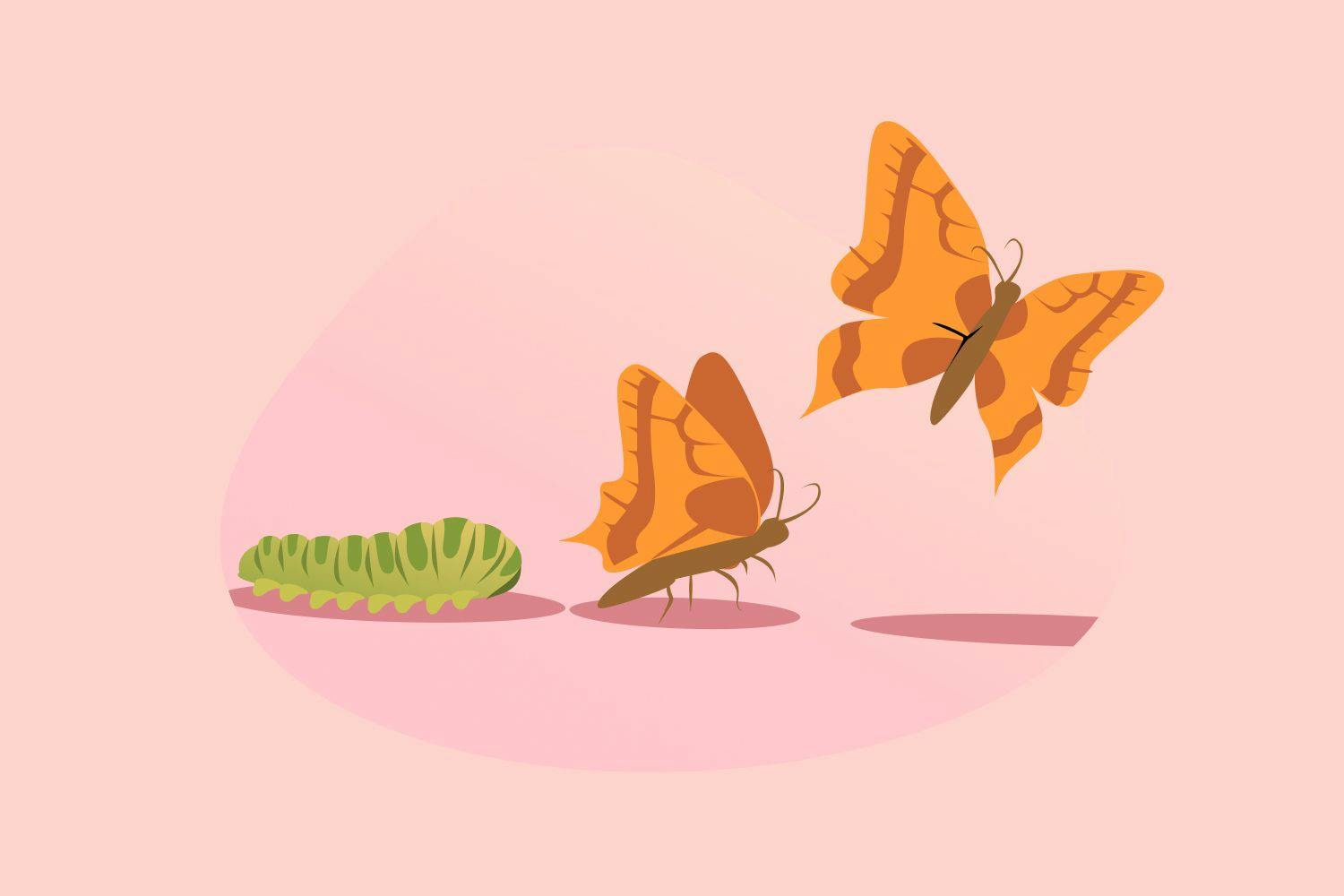Discover the Animal Kingdom: a Guide to English Animal Names


You will get a promo code with a discount for our app courses after reading this article.
Contents
As an English learner, you know many animal names common to households, zoos, and nature. But what about all the other creatures that inhabit our planet? The animal kingdom is vast and fascinating, with incredible species diversity. In this guide, you’ll find a comprehensive list of animals in English, from mammals to arachnids, alongside related vocabulary to enhance your understanding of these fascinating creatures. So prepare to delve into the animal world and enrich your lexicon with these English animal names!
Different Types of Animals
The animal kingdom has over 1.5 million identified species. Animals are classified into different types based on physical characteristics, behaviors, or evolutionary lineage.
Here’s a brief introduction to some of these classifications.
- Mammals. One of the most distinctive features of mammals is the presence of hair or fur, which provides insulation and protection. They also produce milk to nourish their young. Cats, dogs, horses, bears, and cows are well-known mammals.
- Birds. Distinguished by their feathers, which protect them from the elements and allow for flight. Additionally, they have a lightweight skeleton and strong muscles that enable powerful air movement. Some well-known birds include eagles, penguins, ostriches, and hummingbirds.
- Reptiles. Characterized by their scaly skin, which protects them from predators and prevents water loss in dry environments. They often lay eggs with leathery shells and regulate their body temperature through heat sources like the sun or warm rocks. Some common reptiles include snakes, lizards, turtles, and crocodilians.
- Amphibians. Amphibians are unique in that they typically have a double life cycle, spending some part of their lives in water and the other on land. They often have moist skin to breathe through and lay eggs without shells in aquatic environments. Examples of amphibians include frogs, salamanders, newts, and caecilians.
- Fish. These are aquatic creatures with gills to extract oxygen from water and a streamlined body for efficient swimming. Fish come in a variety of colors, sizes, and shapes; some are prized as food or kept as pets. Salmon, trout, sharks, and angelfish are some examples of fish.
- Arachnids. Arachnids are a type of arthropod with eight legs, two main body parts, and no antennae or wings. Their most famous representatives include spiders, scorpions, ticks, and mites.
These are just some of the many kinds of animals! Each category is unique and diverse, with fascinating characteristics that make them truly special. And now, let’s dive deeper into some English animal names to enhance your vocabulary!
1
Furry Friends – Mammal Animals in English
Mammals are beloved creatures, often kept as pets or seen in animal sanctuaries. Their warm-blooded metabolism enables them to regulate their internal temperature and maintain energy levels even in cold environments. As mentioned, these animals have fur or hair covering their bodies and produce milk to feed their young.
Indeed, mammals are divided into several subcategories, including primates (such as monkeys and apes), carnivores (like lions and tigers), herbivores (such as cows and deer), rodents (like rats and hamsters), etc. Of course, with such variety, mentioning all mammal animals is impossible. Nonetheless, here are some popular ones to learn about:
- Cat [kæt].
- Dog [dɑɡ].
- Lion [ˈlaɪən].
- Tiger [ˈtaɪɡər].
- Elephant [ˈɛləfənt].
- Bear [bɛr].
- Horse [hɔrs].
- Cattle [ˈkætəl].
- Sheep [ʃip].
- Deer [dɪr].
- Giraffe [ʒəˈræf].
- Monkey [ˈmʌŋki].
- Gorilla [ɡəˈrɪlə].
- Hippopotamus [ˌhɪpəˈpɑtəməs].
- Kangaroo [ˌkæŋɡəˈru].
As you can see, mammals come in many shapes and sizes – from tiny mice to massive elephants! They play critical ecological roles as pollinators, seed dispersers, pest controllers, or prey items for other larger animals.
Feathered Companions – Birds
This group includes one of English culture’s most admired and versatile animals, symbolizing freedom, beauty, and intelligence. They represent a diverse group of warm-blooded creatures with wings to fly (although some species can’t).
Birds are renowned for their fascinating behaviors, colorful plumage, songs, and migration patterns across continents or societies in large groups (flocks). In addition, they hold many ecological roles, including pollination of plants or seed dispersal, as well as insect and rodent control. There are thousands of bird species worldwide; here are some common names of animals in English:
- Eagle [ˈiɡəl].
- Hummingbird [ˈhʌmɪŋˌbɝd].
- Pigeon [ˈpɪdʒən].
- Canary [kəˈnɛri].
- Duck [dʌk].
- Ostrich [ˈɑstrɪtʃ].
- Flamingo [fləˈmɪŋɡoʊ].
- Seagull [ˈsiɡʌl].
- Sparrow [ˈspæroʊ].
- Peacock [ˈpiˌkɑk].
- Parrot [ˈpærət].
- Penguin [ˈpɛŋɡwɪn].
- Raven [ˈreɪvən].
- Toucan [ˈtuˌkæn].
- Woodpecker [ˈwʊdˌpɛkər].
The range of bird species varies greatly, from tiny hummingbirds to majestic eagles. They can be found in different habitats – in frigid polar regions, tropical jungles, or open landscapes.
Slithery and Scaly – Reptiles and Amphibians
Reptiles and amphibians share some similarities, but they're indeed different creatures. These cold-blooded critters have evolved fascinating survival strategies to adapt to various environments, from arid deserts to lush rainforests. Unfortunately, they often get a bad rap due to their appearance or behavior. Still, they play vital roles in their ecosystems, such as maintaining balance in food chains and controlling insect populations.
With their scaly skin and egg-laying habits, reptiles are well-equipped for survival in harsh conditions. They can be found slithering, crawling, or basking in the sun across the globe. Here are some common reptiles in English:
- Snake [sneɪk].
- Lizard [ˈlɪzərd].
- Turtle [ˈtɝtəl].
- Crocodile [ˈkrɑkəˌdaɪl].
- Iguana [ɪˈgwɑnə].
- Chameleon [kəˈmiliən].
- Alligator [ˈælɪˌɡeɪtər].
- Gecko [ˈɡɛkoʊ].
- Komodo Dragon [kəˌmoʊdoʊ ˈdræɡən].
- Python [ˈpaɪθən].
On the other hand, amphibians lead a dual life, spending time in water and on land. These fascinating creatures usually start their lives as aquatic larvae and later transform into terrestrial adults. Some common animal names of amphibians in English include:
- Frog [frɔɡ].
- Salamander [ˈsæləˌmændər].
- Newt [n(j)ut].
- Axolotl [ˌæksəˈlɑtəl].
- Toad [toʊd].
- Mud Puppy [ˈmʌdˌpʌpi].
- Hellbender [ˈhɛlˌbɛndər].
- Tomato Frog [təˈmeɪtoʊ frɔɡ].
- Siren [ˈsaɪrən].
- Necturus [nɛkˈtʊrəs].
Reptiles and amphibians can be captivating creatures with their unique colors and textures, enthralling behaviors, and remarkable adaptations.
Fascinating Swimmers – Fish
Let’s splash and explore the enchanting world of fish, those remarkable swimmers that inhabit our planet’s oceans, rivers, and lakes. With over 33,000 known species, fish showcase a stunning array of colors, shapes, and sizes. Fish, from the swift and powerful sharks to the charismatic and vivid clownfish, never cease to amaze. Their streamlined bodies and fins help them move through the water efficiently, and their gills extract oxygen for breathing.
Fish play a crucial ecological role in aquatic habitats, regulating nutrient cycles and providing food sources to other animals. Here are some well-known fish animals’ names in English:
- Salmon [ˈsæmən].
- Trout [traʊt].
- Shark [ʃɑrk].
- Angelfish [ˈeɪndʒəlˌfɪʃ].
- Clownfish [ˈklaʊnˌfɪʃ].
- Goldfish [ˈɡoʊldˌfɪʃ].
- Tuna [ˈtuːnə].
- Swordfish [ˈsɔːrdˌfɪʃ].
- Guppy [ˈɡʌpi].
- Barracuda [ˌbærəˈkudə].
Fish can be found in various habitats, from the deep and mysterious ocean depths to crystal-clear mountain streams. As such, they have adapted to diverse conditions and developed remarkable survival strategies that make them truly unique creatures.
Tiny and Terrific – Insects and Arachnids
Arachnids and insects are the most numerous animals on Earth, with over 1.3 million identified species of insects alone! They come in all kinds of shapes and sizes, from minuscule ants to massive beetles or spiders. As arthropods, they have a hard exoskeleton and segmented bodies with multiple legs. However, insects typically have six legs, while arachnids have eight plus two extra structures called pedipalps.
Arachnids often evoke fear or disgust in people. Still, they control insect populations and are a vital food source for birds, reptiles, and other small mammals. Here are some common examples in English:
- Spider [ˈspaɪdər].
- Scorpion [ˈskɔrpiən].
- Tick [tɪk].
- Mite [maɪt].
- Tarantula [təˈræntʃələ].
- Harvestman [ˈhɑrvɪstmən].
- Jumping spider [ˈdʒʌmpɪŋ ˈspaɪdər].
- Black widow [blæk ˈwɪdoʊ].
- Daddy longlegs [ˈdædi lɔŋˌlɛɡz].
- Brown recluse [braʊn rɪˈkluːs].
Insects are often admired for their beauty and diversity. They play crucial roles in our ecosystems and help pollination, decomposition, and serve as food sources for other animals. Some well-known animal names in English include the following:
- Ant [ænt].
- Butterfly [ˈbʌtərˌflaɪ].
- Bee [bi].
- Mosquito [məˈskiːtoʊ].
- Dragonfly [ˈdræɡənˌflaɪ].
- Beetle [ˈbitəl].
- Moth [mɔθ].
- Grasshopper [ˈɡræsˌhɑpər].
- Ladybug [ˈleɪdiˌbʌɡ].
- Cricket [ˈkrɪkɪt].
Both insects and arachnids can be found in many habitats, from lush forests and grasslands to arid deserts and even our homes. As such, they are an essential part of our world and deserve respect and admiration.
Animal-Related Terms
Aside from learning animals in English, there are also many animal-related terms that you might find helpful to add to your vocabulary. These terms pertain to animals’ behavior, anatomy, or habitat and can enhance your understanding of these creatures. Here are some examples:
- Habitat [ˈhæbɪˌtæt]
It refers to the natural environment where an animal lives and thrives. Many animals have specific habitat requirements, such as freshwater fish needing water with a particular temperature range or polar bears requiring icy landscapes.
- Instinct [ˈɪnstɪŋkt]
Instinct is an animal’s innate behavior without the necessity of learning or experience. For example, a bird building its nest with specific materials and patterns without being taught is acting on instinct. Their behavior is genetically programmed and serves a particular purpose for survival, such as finding food or protecting their offspring.
- Migration [maɪˈɡreɪʃən]
It is the seasonal movement of animals from one place to another, usually for breeding or food. For instance, many bird species migrate south during winter to find warmer temperatures and more abundant food sources.
- Hibernation [ˌhaɪbərˈneɪʃən]
The word refers to a state of inactivity and decreased metabolic rate during winter months, which helps animals conserve energy. For example, some mammals hibernate by reducing their heart rate and metabolism, while reptiles often enter brumation – slowing down but not fully sleeping.
- Camouflage [ˈkæməˌflɑːʒ]
Some animals can blend into their environment for protection from predators or as a hunting strategy. This ability is called camouflage, allowing animals to incorporate into their surroundings by changing colors or patterns on their bodies. Some examples of camouflaging animals include chameleons, octopuses, and moths.
- Predator [ˈprɛdətər]
A predator is a creature that hunts, kills, and eats other animals as prey. These include carnivores such as lions or wolves but also raptors like eagles, birds of prey known for their sharp talons and keen vision when hunting.
- Herbivore [ˈhɜrbəˌvɔr]
The opposite of predators, herbivores feed on plants rather than animals. Such creatures have specialized teeth and digestive systems to break down rigid plant material. Examples of herbivores include cows, deer, and rabbits.
Learn English Animals Names with Promova
Are you looking to broaden your vocabulary and learn some English animal names? Look no further than Promova – our language learning platform offers many tools and resources to help you master new words quickly, efficiently, and confidently.
The Promova app allows you to access hundreds of lessons in different categories. Quizzes, interactive exercises, and listening activities can help you test your knowledge and practice pronunciation. In our blog, you’ll find informative articles with engaging content about various topics, from guides on idioms to practical advice on acing a job interview in English.
Moreover, Promova offers personalized online classes with certified tutors that can tailor your lessons to meet your specific needs and help you achieve fluency in English. Our professionals are experienced in teaching English to learners of all levels and backgrounds, so whether you’re a beginner or an advanced speaker looking to fine-tune your skills, we’ve got the right tutor for you.
Conclusion
Learning about different types of animals is an exciting way to explore our world’s biodiversity. Mammals, birds, reptiles and amphibians, fish, and insects have unique characteristics that make them exciting to study. From their habitats to their behaviors, diets, or anatomy – understanding the diversity of animals can significantly enhance our appreciation for nature’s wonder.
Adding animal-related terms to your vocabulary bank is also a great way to expand your English proficiency skills while learning about these remarkable beings!
Use your discount and learn languages with Promova
Start learningFAQ
Why should I learn English animal names and related terms?
Learning English animal names and related terms can enhance your vocabulary. It can help you communicate with others about animals, whether in casual conversation or more professional settings. Furthermore, having animal-related vocabulary can improve your understanding of science and biology concepts since it is used extensively throughout these fields. Knowing collective nouns for animals can also enhance your English grammar!
What is the best way to learn English animal names and related terms?
The best way to learn all animal names in English depends on your preferences. Some may favor memorizing vocabulary lists or using flashcards, while others might benefit more from visual aids like pictures or videos about animals. Additionally, Promova offers a lot of interactive exercises, quizzes, and personalized online classes to improve your vocabulary skills in a fun and engaging way.
What are some tips for memorizing animal names and related terms?
You can associate new vocabulary with images or stories that help give context to the word’s definition. Another strategy includes practicing repetition by reciting a list of animals aloud multiple times or grouping similar types – like mammals versus insects, so as not to get confused with the frequent use of synonyms!
Are there any resources available for learning English animal-related vocabulary?
Yes! There are various online resources, from the dictionaries like Merriam-Webster and Oxford English Dictionary to websites dedicated to animal-related vocabularies, such as Animal Corner. Additionally, watching nature documentaries with subtitles in English is a powerful way to learn new words while enjoying the beauty of wildlife.






Comments